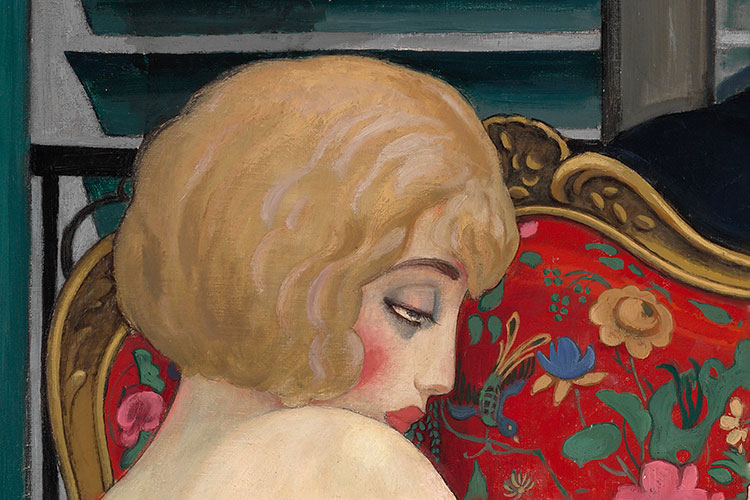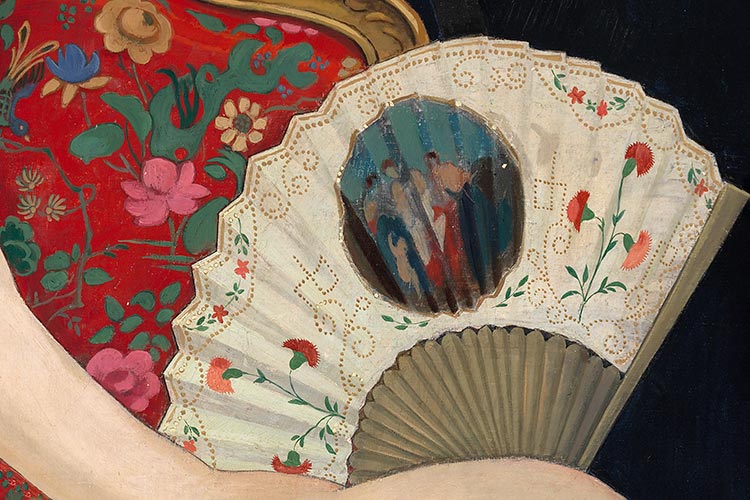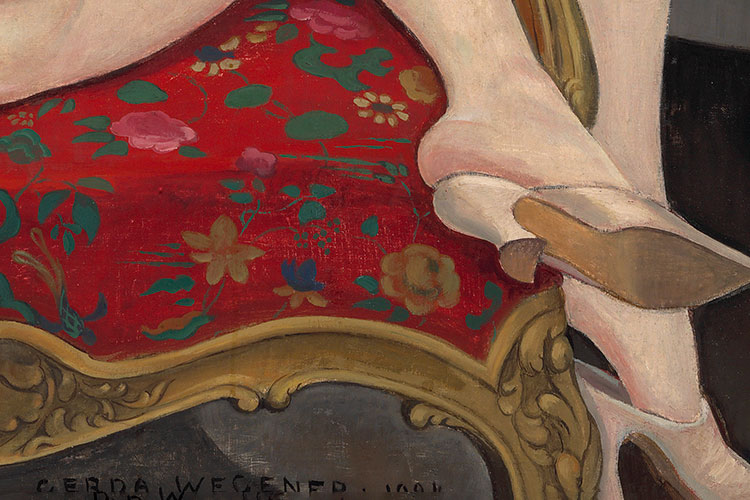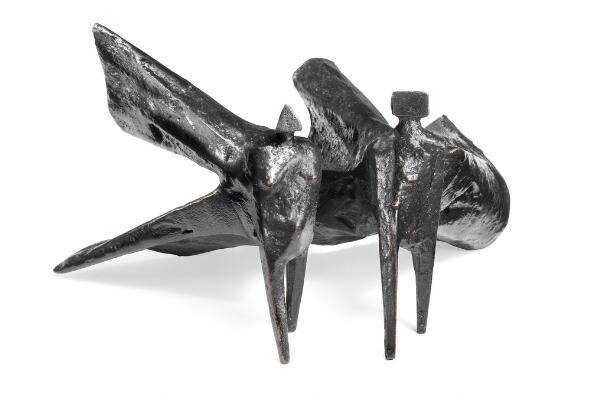Gerda Wegener’s Portrait of the Trans Woman Lili Elbe
A lounging and seductive odalisque with red lips and heavy eyelids. In Gerda Wegener’s portrait we meet Lili Elbe, also known as Einar Wegener, who nearly 100 years ago underwent one of the world’s first gender reassignment surgery. The painting is once again highly topical with the ongoing debates on gender and sexuality, and very appropriately the work is up for auction on 8 March –the International Women’s Day.
One of the most prominent female artists in Denmark during the 1920s was Gerda Wegener. She was an extremely talented artist, but was also known for her marriage to Lili Elbe, who was one of the first people to undergo gender reassignment surgery. Gerda Wegener has portrayed her partner, the trans woman Lili Elbe without clothes in the painting "I sommervarmen” (In the Heat of Summer) from 1924. Today – almost 100 years later – where gender, sexuality and identity are once again at the forefront of the public agenda, the couple’s story and the offered artwork contains renewed topicality.
“The painting is so well-made that the viewer is immediately captured by the aesthetic qualities and beautiful details of the image. The gender theme cannot be decoded immediately, and in this way the artist challenges the preconceived notions with which we read a motif. The understanding that the model we are looking at is a woman who was biologically born as a man does not take anything away from the work. It functions both with and without this knowledge – regardless of gender, preferences and orientation – which positions it among the best works by the artist,”
says Peter Beck, a specialist in the Department of Modern Art at Bruun Rasmussen.
A Once Controversial Artist and Woman
Gerda Wegener was in many ways a woman ahead of her time. With her refined brush stroke and her elegant portraits of women, she became a recognized artist in the capital city of art, Paris, to which she moved. She became part of the city's art scene as a portrait painter and sought-after illustrator for the leading fashion magazines, who were enticed by her piquant and often quite decadent depictions of women with red lips and almond-shaped eyes.

|
|
However, it was not only Gerda Wegener's position as a pioneering artist that made her famous. Her personal story has also fascinated the whole world and still fascinates today, most recently with the film "The Danish Girl" from 2016, which depicts her and Lili Elbe's life. |
|
Gerda Wegener's fate, however, does not seem to have been on the cards from the start as she grew up as the daughter of a priest in East Jutland. She quickly chose to pursue her calling as an illustrator and moved to Copenhagen to study at the Royal Danish Academy of Fine Arts. In 1904 she married her fellow student, the landscape painter Einar Wegener, who later underwent a gender reassignment surgery and is today known as Lili Elbe. The couple left Copenhagen in 1912 and settled in the more liberal metropolis of Paris, where they had the opportunity to unfold their artistic careers and live more freely in a then controversial relationship. Their marriage was annulled in 1930, where one of the causes was that Lili Elbe was physically and legally accepted as a woman and therefore could not remain married to another woman. |

|
Gender, Sexuality and Identity in Art
|
Gerda Wegener is an empathetic interpreter of human beings, and she especially enjoys highlighting female beauty. In addition to the actresses and artistic personalities of the time, the portrayals of Lili Elbe are absolutely central. This is also the case with “I Sommervarmen” (In the Heat of Summer) from 1924, where Lili Elbe is depicted with her back turned and reclining seductively as an odalisque. The face is seen in profile with heavy, almost drowsy eyelids, red lips and cherry-coloured cheeks. Wearing only a pair of high-heeled silk sandals, the vulnerable nudity is contrasted by the flowery Rococo chair and fan. |

|
|
Art history is filled with beautiful, female nude models who appear as objects of the male artist's desires and the spectator's scrutinizing gaze. But here the gaze becomes ambiguous. Partly because the artist is a woman – partly because the model is a trans woman. In our day and age where gender, sexuality and identity are issues debated and negotiated like never before, the painting has gained an increased topicality despite the almost 100 years that have passed. The painting was part of ARKEN's large "Gerda Wegener" exhibition from 2015-17, which was a tribute to a strong artist whose works and extraordinary life has struck a chord in our own time. |

For further information, please contact:
|
|
Niels RabenNiels RabenHead Senior Specialist / Auctioneer / København |
|
|
Niels Boe-HauggaardNiels Boe-HauggaardHead of Department / København |
|
|
Kathrine EriksenKathrine EriksenSpecialist / København |
|
|
Niklas Langeland PedersenNiklas Langeland PedersenSpecialist / København |
|
|
Peter BeckPeter BeckHead of valuation / Aarhus |
